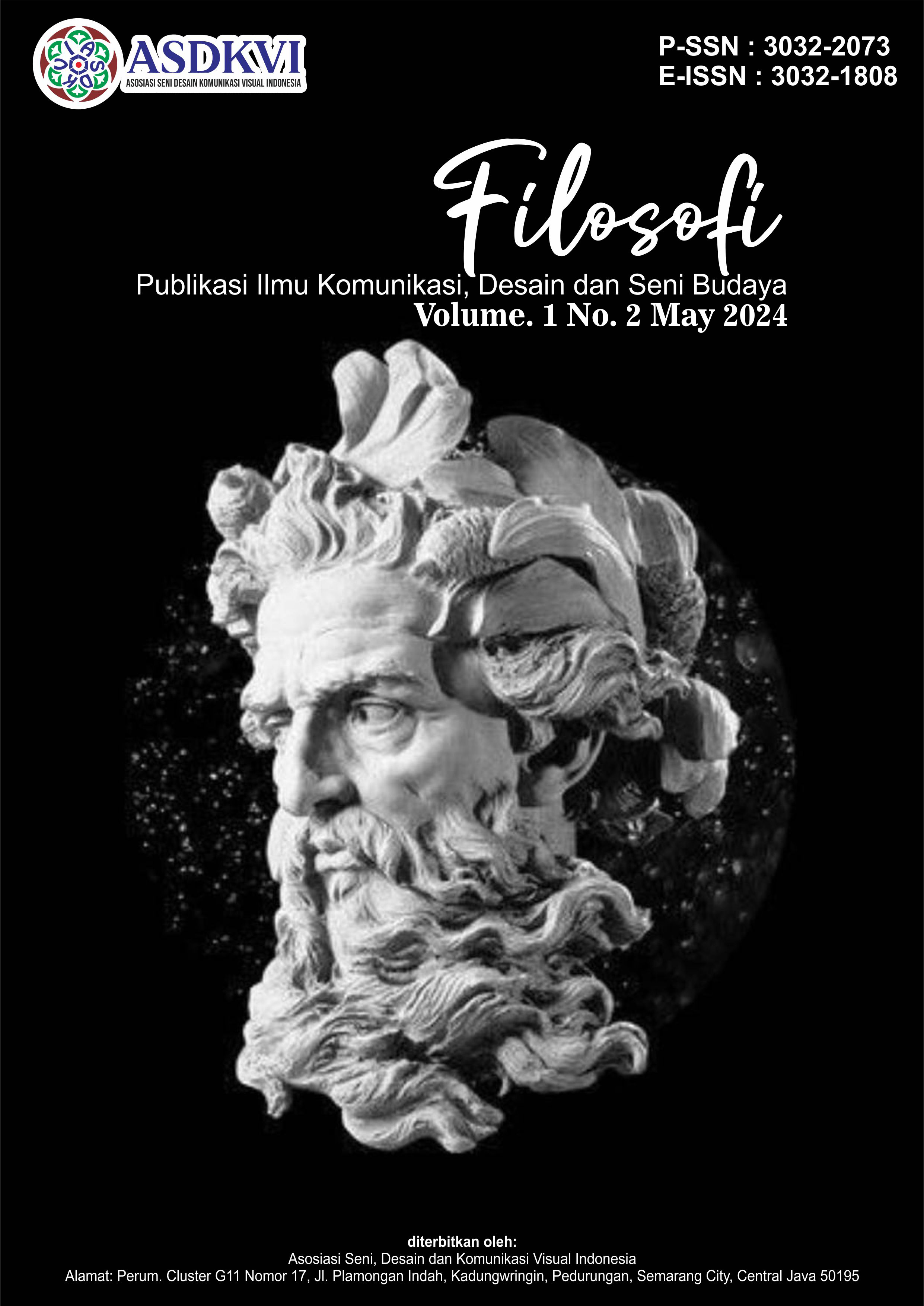Pengaruh Konten Tiktok Terhadap Penggunaan Bahasa Indonesia Sesuai E.Y.D Di Aplikasi Whatsapp Pada Remaja Di Bandung
DOI:
https://doi.org/10.62383/filosofi.v1i2.102Keywords:
TikTok, Indonesian language, communication, teenagersAbstract
The TikTok application has become a global phenomenon and is widely used by people of all ages, especially the younger generation, including high school teenagers. The prevalence of TikTok among Indonesian teenagers will undoubtedly affect the use of the Indonesian language in both direct and virtual communication. This study aims to investigate the influence of TikTok content on the use of proper Indonesian language, following the Enhanced Spelling System (E.Y.D), in communication through the WhatsApp application. The focus of this research is on high school students in Bandung City. The research method used is quantitative with a survey approach. Data was collected through a questionnaire created using Google Forms and distributed via the social media platform WhatsApp. The results show that the use of TikTok can influence the language used by students in communication. This study provides insights into how TikTok content affects the use of the Indonesian language among high school students. The implication is the need for a holistic approach in teaching language, including considering the influence of social media in language learning.
References
Artikel Jurnal
Bator, R. J., Bryan, A. D., & Schultz, P. W. (2011). Who Gives a Hoot?: Intercept Surveys of Litterers and Disposers. Environment and Behavior, 43(3), 295–315. https://doi.org/10.1177/0013916509356884.
Hidayati, S.N. (2016). Pengaruh Pendekatan Keras dan Lunak Pemimpin Organisasi terhadap Kepuasan Kerja dan Potensi Mogok Kerja Karyawan. Jurnal Maksipreneur: Manajemen, Koperasi, dan Entrepreneurship, 5(2), 57-66. http://dx.doi.org/10.30588/SOSHUMDIK.v5i2.164.
Risdwiyanto, A. & Kurniyati, Y. (2015). Strategi Pemasaran Perguruan Tinggi Swasta di Kabupaten Sleman Yogyakarta Berbasis Rangsangan Pemasaran. Jurnal Maksipreneur: Manajemen, Koperasi, dan Entrepreneurship, 5(1), 1-23. http://dx.doi.org/10.30588/SOSHUMDIK.v5i1.142.
Artikel Prosiding
Norsyaheera, A.W., Lailatul, F.A.H., Shahid, S.A.M., & Maon, S.N. (2016). The Relationship Between Marketing Mix and Customer Loyalty in Hijab Industry: The Mediating Effect of Customer Satisfaction. In Procedia Economics and Finance (Vol. 37, pp. 366–371). Elsevier B.V. https://doi.org/10.1016/S2212-5671(16)30138-1.
Working Paper
Armand, F. (2003). Social Marketing Models for Product-Based Reproductive Health Programs: A Comparative Analysis. Occasional Paper Series. Washington, DC. Retrieved from www.cmsproject.com.
Disertasi/Tesis/Paper Kerja
Belair, A. R. (2003). Shopping for Your Self: When Marketing becomes a Social Problem. Dissertation. Concordia University, Montreal, Quebec, Canada.
Lindawati (2015). Analisis Faktor yang Mempengaruhi Perilaku Ekonomi dan Kesejahteraan Rumah Tangga Petani Usahatani Terpadu Padi-Sapi di Provinsi Jawa Barat. Institut Pertanian Bogor. Retrieved from http://repository.ipb.ac.id/ handle/123456789/85350.
Buku Teks
Kotler, P., & Lee, N. R. (2009). Up and Out of Poverty: The Social Marketing Solution. New Jersey: Pearson Education, Inc.
Laporan Instansi/Lembaga/Organisasi/Perusahaan
LPPSP. (2016). Statistik Indonesia 2016. Badan Pusat Statistik, 676. Jakarta. Diakses dari https://www.LPPSP.go.id/index.php/publikasi/326.
Artikel Surat Kabar/Majalah
Risdwiyanto, A. (2016). Tas Kresek Berbayar, Ubah Perilaku Belanja? Kedaulatan Rakyat, 22 Februari, 12.
Sumber dari internet
Chain, P. (1997). Same or Different?: A Comparison of the Beliefs Australian and Chinese University Students Hold about Learning’s Proceedings of AARE Conference. Swinburne University. Available at: http://www. swin.edu.au/aare/ 97pap/CHAN97058.html, diakses tanggal 27 Mei 2000.
StatSoft, Inc. (1997). Electronic Statistic Textbook. Tulsa OK., StatSoft Online. Available at: http://www.statsoft.com/textbook/stathome.html, diakses tanggal 27 Mei 2000.
Downloads
Published
How to Cite
Issue
Section
License
Copyright (c) 2024 Filosofi : Publikasi Ilmu Komunikasi, Desain, Seni Budaya

This work is licensed under a Creative Commons Attribution-ShareAlike 4.0 International License.





